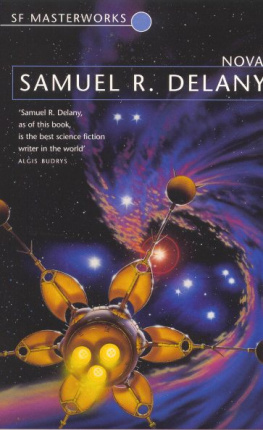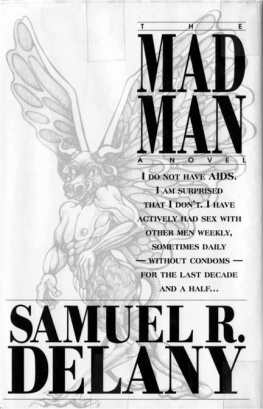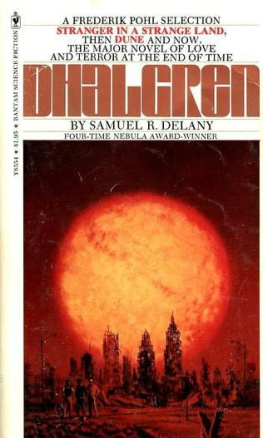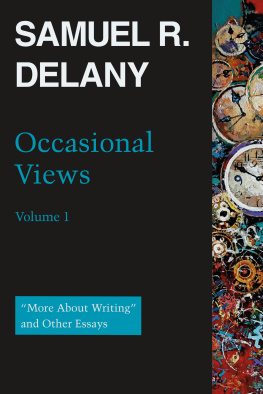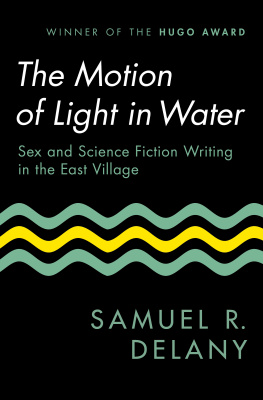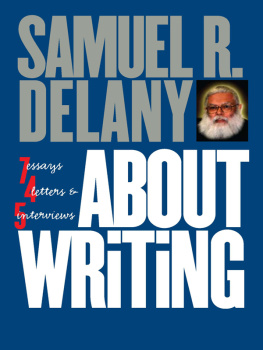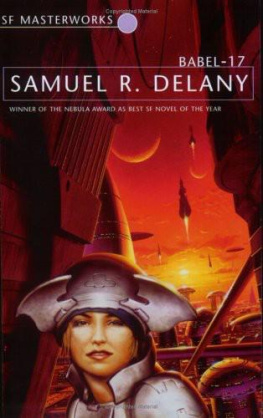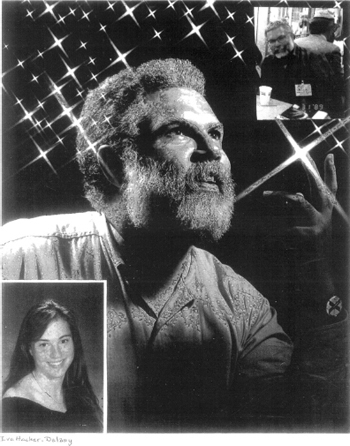
LETTERS FROM AMHERST
ALSO BY SAMUEL R. DELANY
FICTION
The Jewels of Aptor (1962)
The Fall of the Towers
Out of the Dead City (1963)
The Towers of Toron (1964)
City of a Thousand Suns (1965)
The Ballad of Beta-2 (1965)
Babel-17 (1966)
Empire Star (1966)
The Einstein Intersection (1967)
Nova (1968)
Driftglass (1969)
Equinox (1973)
Dhalgren (1975)
Trouble on Triton (1976)
Return to Nevron
Tales of Nevron (1979)
Neveryna (1982)
Flight from Nevron (1985)
Return to Nevron (1987)
Distant Stars (1981)
Stars in My Pocket Like Grains of Sand (1984)
Driftglass/Starshards (collected stories, 1993)
They Fly at iron (1993)
The Mad Man (1994)
Hogg (1995)
Atlantis: Three Tales (1995)
Aye, and Gomorrah (and other stories, 2004)
Phallos (2004)
Dark Reflections (2007)
Through the Valley of the Nest of Spiders (2012)
A, B, C: Three Short Novels (2015)
The Hermit of Houston (2017)
The Atheist in the Attic (2018)
GRAPHIC NOVELS
Empire (artist, Howard Chaynkin, 1980)
Bread & Wine (artist, Mia Wolff, 1999)
NONFICTION
The Jewel-Hinged Jaw (1977; revised, 2008)
The American Shore (1978)
Heavenly Breakfast (1979)
Starboard Wine (1978; revised, 2008)
The Motion of Light in Water (1988)
Wagner/Artaud (1988)
The Straits of Messina (1990)
Silent Interviews (1994)
Longer Views (1996)
Times Square Red, Times Square Blue (1999)
Shorter Views (1999)
1984: Selected Letters (2000)
About Writing (2005)
Ash Wednesday (2017)
SAMUEL R. DELANY
Letters from Amherst
FIVE NARRATIVE LETTERS
WESLEYAN UNIVERSITY PRESS
Middletown, Connecticut
Wesleyan University Press
Middletown CT 06459
www.wesleyan.edu/wespress
2019 Samuel R. Delany
All rights reserved
Manufactured in the United States of America
Designed by Richard Hendel
Typeset in Utopia and Hertz by Passumpsic Publishing
Library of Congress Cataloging-in-Publication Data available upon request
Hardcover ISBN: 978-0-8195-7820-4
Paperback ISBN: 978-0-8195-7851-8
Ebook ISBN: 978-0-8195-7821-1
5 4 3 2 1
FRONTISPIECE
Iva Hacker-Delany (bottom left): Graduation picture from the Bronx High School of Science. Chip Delany (center): Taken in the first week of teaching at UMass in 1988. Chip Delany (top right) at Noreascon 3 in Boston, August 31, 1989.
Cover photo Timofey Zadnorov, iStock photo.
Never was a workif it can be called a workless planned and less contrived than these letters written at longish intervals, almost always in the throes of some emotional crisis which they reflect without actually describing. They were for me no more than a natural and instinctive relief from worries, hardships or despondencies that made it impossible for me to start or continue writing a novel. Some were even written at great speed, broken off abruptly to catch the mail and posted without any thought of publication. Later the idea of putting them together and filling up the gaps made me reclaim them from those friends most likely to have preserved my epistles; and these are the ones which are possibly the least unworthyunderstandably enough, since we are always more open and at ease when talking about our feelings to one person in private than in the presence of someone unknown. That unknown third party is the reader, the public; and were it not that writing has a definite appealoften painful, sometimes intoxicating, but ever irresistiblewhich makes us forget the unknown witness and be carried away by our topic, I dont think we would ever have the courage to write about ourselvesunless we had a great deal of good to say. And may the lovers of fiction not judge me too severely either.
GEORGE SAND, Lettres dun voyageur
CONTENTS
CORRESPONDENTS
ROBERT S. BRAVARD
was director of library services at the Stevenson Library at Lock Haven University, Lock Haven, Pennsylvania, and the coauthor with Michael W. Peplow of Samuel R. Delany, A Primary and Secondary Bibliography, 19621979 (G. K. Hall, 1980).
KATHLEEN SPENCER
is the author of a monograph, Charles Williams (Starmont, 1985), and was a professor of English at the University of Nebraska, Lincoln.
ERIN MCGRAW
is author of the short story collections Bodies at Sea (University of Illinois Press, 1989) and Lies of the Saints (Chronicle Books, 1996), and the novel The Baby Tree (Story Line Press, 2002). She taught English at DePauw University and Ohio State University.
FOREWORD
Nalo Hopkinson
In 2014, the Damon Knight Memorial Grand Master Award was presented to Samuel R. Delany. In science fiction and fantasy literary circles, this award confers recognition and respect to someone whose oeuvre is of significant merit. It may have been the first time in the awards thirty-eight years of existence that it went to a writer of color; certainly it was the first time it was conferred upon a Black writer. Delany has written in numerous genres, but we in science fiction claim him and he claims uscertainly not a monogamous relationship, but a strong and loyal oneso I write about him from that perspective.
Ive been reading Samuel Chip Delanys work since I was in my 20s, long before I came to know him personally. I began with his science fiction and fantasy, since thats my preferred mode of fiction (and which, a decade or so later I would choose as the mode in which I primarily write. It was in Chips work that I encountered the concept that science fiction is not a genre with a single, fixed narrative, but a metagenre. Its more a way of writing and reading; what I now call a mode of writing.).
When Id read all of Chips science fiction and fantasy I could get my hands on, I was still craving more of his words, so when I discovered his non-fiction, I moved on to that. His autobiographies Heavenly Breakfast and The Motion of Light in Water were a jaw-dropping revelation. They were evidence of a person living a life outside the mainstream, and not simply living it, but also finding friends, allies, lovers, love and support along the way. Those two books showed me that I too, a misfit Black girl, could dare to live.
Those read, I moved on to Chips scholarly work. Not a familiar leap for me at all; at the time, more than thirty years ago, I read fiction almost exclusively.
I didnt know what to expect, had no idea what Id let myself in for. Chip provided one of my first introductions to the scholarly practices of cultural theory and literary criticism. Many of the concepts were completely new to me. I barely grasped half of what I read. But the ideas, the lovely, shiny ideas and Chips plum-cake-rich writing style, luxuriating as it does in words, connections, detail, and precision, captured me in prisms, mirrors, lenses, and kept (keeps) me reading. Yes, its a mixed metaphor. Its all right; youll survive.
Next page

